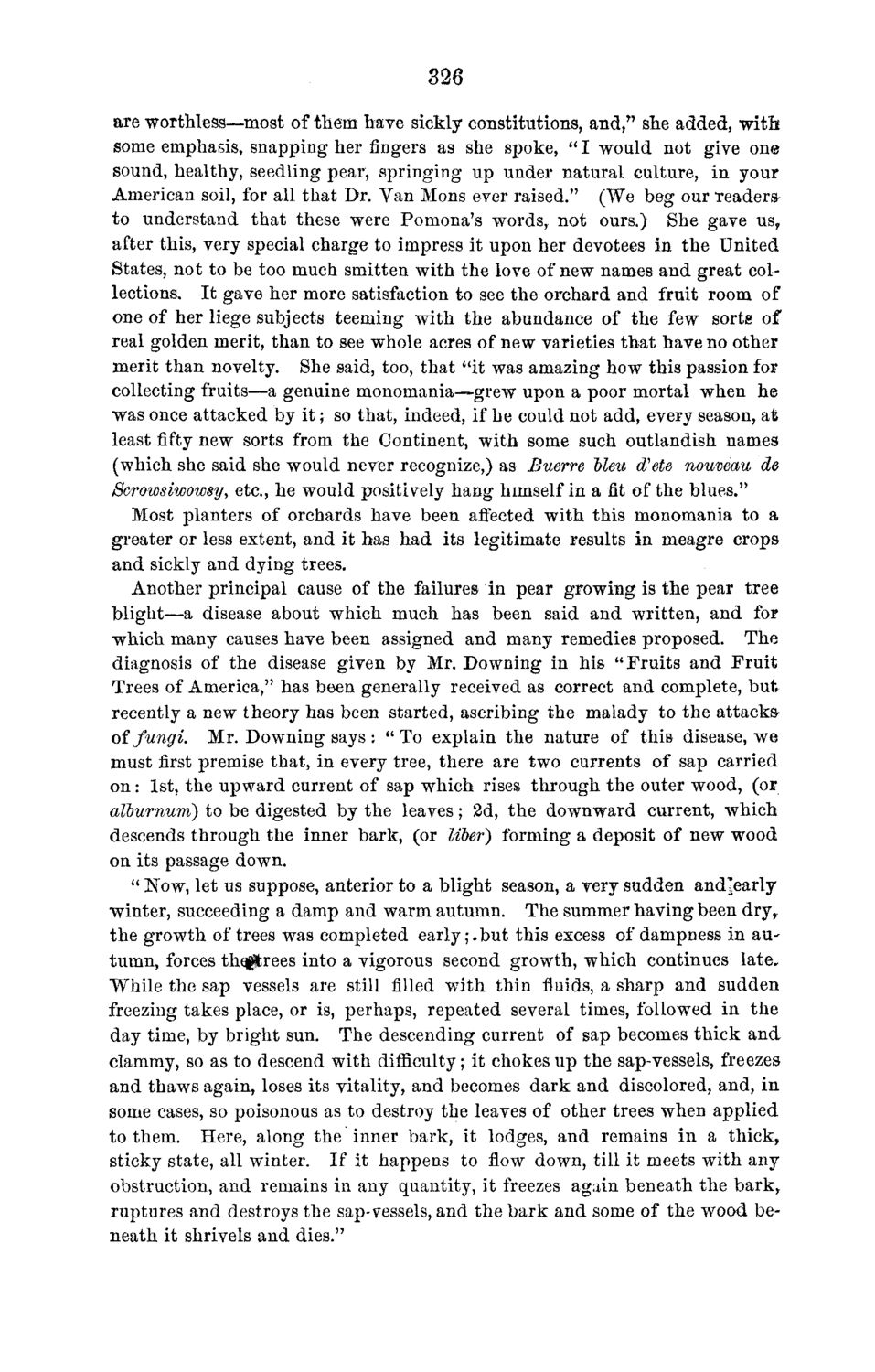| |
| |
Caption: Board of Trustees Minutes - 1870
This is a reduced-resolution page image for fast online browsing.

EXTRACTED TEXT FROM PAGE:
326 are worthless—most of them have sickly constitutions, and/' she added, witli some emphasis, snapping her fingers as she spoke, " I would not give one sound, healthy, seedling pear, springing up under natural culture, in your American soil, for all that Dr. Yan Mons ever raised." (We beg our "readers to understand that these were Pomona's words, not ours.) She gave us, after this, very special charge to impress it upon her devotees in the United States, not to be too much smitten with the love of new names and great collections. It gave her more satisfaction to see the orchard and fruit room of one of her liege subjects teeming with the abundance of the few sorts of real golden merit, than to see whole acres of new varieties that have no other merit than novelty. She said, too, that "it was amazing how this passion for collecting fruits—a genuine monomania—grew upon a poor mortal when he was once attacked by it; so that, indeed, if he could not add, every season, at least fifty new sorts from the Continent, with some such outlandish names (which she said she would never recognize,) as Buerre ~bleu cPete noumau de jScrowsiwowsy, etc., he would positively hang himself in a fit of the blues." Most planters of orchards have been affected with this monomania to a greater or less extent, and it has had its legitimate results in meagre crops and sickly and dying trees. Another principal cause of the failures in pear growing is the pear tree blight—a disease about which much has been said and written, and for which many causes have been assigned and many remedies proposed. The diagnosis of the disease given by Mr. Downing in his "Fruits and Fruit Trees of America," has been generally received as correct and complete, but recently a new theory has been started, ascribing the malady to the attacks* of fungi. Mr. Downing says : "To explain the nature of this disease, we must first premise that, in every tree, there are two currents of sap carried on: 1st, the upward current of sap which rises through the outer wood, (or alburnum) to be digested by the leaves; 2d, the downward current, which descends through the inner bark, (or liber) forming a deposit of new wood on its passage down. " Now, let us suppose, anterior to a blight season, a very sudden and?early winter, succeeding a damp and warm autumn. The summer having been dry, the growth of trees was completed early;. but this excess of dampness in autumn, forces thqftrees into a vigorous second growth, which continues late. While the sap vessels are still filled wTith thin fluids, a sharp and sudden freezing takes place, or is, perhaps, repeated several times, followed in the day time, by bright sun. The descending current of sap becomes thick and clammy, so as to descend with difficulty; it chokes up the sap-vessels, freezes and thaws again, loses its vitality, and becomes dark and discolored, and, in some cases, so poisonous as to destroy the leaves of other trees when applied to them. Here, along the inner bark, it lodges, and remains in a thick, sticky state, all winter. If it happens to flow down, till it meets with any obstruction, and remains in any quantity, it freezes again beneath the bark, ruptures and destroys the sap-vessels, and the bark and some of the wood beneath it shrivels and dies."
| |